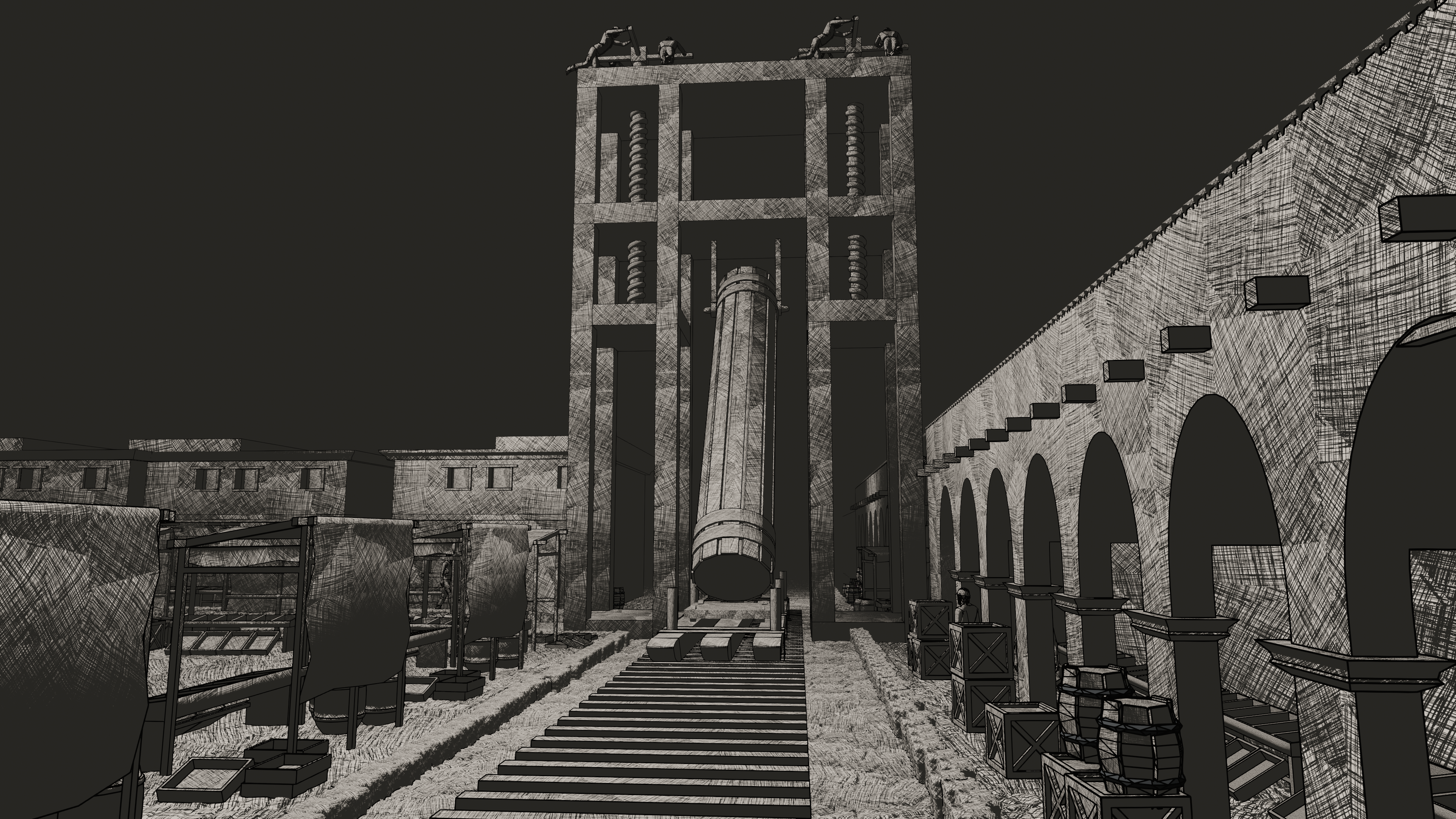The City
Manoeuvring a monolithic shaft through the city streets
Transporting columns from quarries to shorelines involved constructing improvised roads using quarry debris to prevent cart sinking in unstable soils, adding to land transportation costs. In contrast, Rome's well-developed city had smooth roads for efficient cart or sledge transportation. However, narrow, steep, and winding city streets posed navigation challenges, making Chersiphron's perpendicular column placement method impractical. Pulling the heavy sledge required numerous oxen, sometimes up to 100, and considerable space, limiting its use to wide, straight streets. Francesco's machines, more compact, were better suited for urban environments.

Oxen were preferred over horses due to their endurance, energy, and yoke compatibility, ensuring proper breathing. Horses were used for lighter loads. The main challenge was the cart's load-bearing capacity, addressed by designs like the 14-wheeled cart, though wheel failures were still a concern. Francesco's machines provided a solution for navigating streets with elevations, slopes, and sharp turns, addressing technical challenges in column transportation within the city.